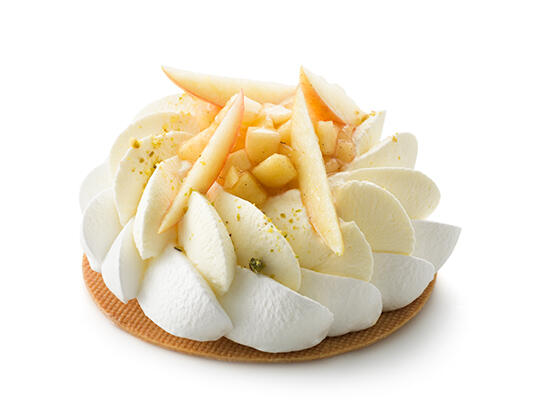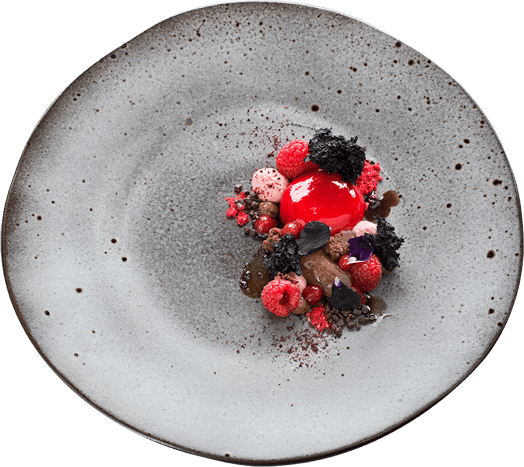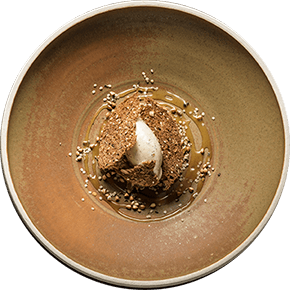Take advantage of these trends in 2023
The year 2022 is drawing to a close. A great time to look back and also to look forward. What trends did we see and what do we take with us into the new year? Our Pastry advisor Debic Dré Eversteijn mentions three striking trends in the bakery industry and gives you his personal tips for 2023.

Seasonal fruit
In summer, the shop windows of artisan bakers are filled with all kinds of strawberry pastries. While those strawberries are available all year round, there is growing resistance to having fruit flown in or the energy-consuming cultivation in greenhouses. We prefer seasonal fruit these days. And that really doesn't have to be just strawberries! Pears, apples, mandarins, oranges, blackberries, blueberries and limes are also perfect seasonal fruits to use in cakes and pastries. Fruit gives your pastries a fresh, healthier and fresher look, and consumers are very sensitive to that.

Dré’s tip: “With prices rising, we as artisans must continue to demonstrate our added value. Use seasonal produce and seasonal fruit to distinguish yourself from supermarkets: you have the ability to quickly respond to changes in weather, seasons or a nice harvest. Team up with a local fruit grower and communicate about it in your shop. For example, place a sign next to your pastries saying that they contain fresh seasonal fruit. Try this recipe of my pavlova with apple and hazelnut.”
East meets west
It’s a small world! Boundaries are blurring and we see more and more culinary influences from Asia in professional kitchens. Japanese sophistication, Korean innovations, traditional French techniques and popular classics from Italy: we see them regularly, on their own or combined with existing recipes. We call these traditional recipes with a modern twist Weastern cuisine. The result? Exciting new flavour and texture combinations. And a growing interest in Asian patisserie. Pastries from China and Japan are much less sweet than in Europe and less butter and wheat are used in the preparations, making these sweet creations lighter.

Dré’s tip: “When it comes to Asian flavours, we automatically think of matcha. But not everyone likes this distinct flavour in the West. Besides, there are many more raw materials in our bakery that have Asian origins. Think of sesame seeds, peanuts, ginger, poppy seeds, mandarin and tea. They offer a very different flavour palette compared to our familiar flavour combinations based on whipped cream, chocolate and fruit. By adding flavours that consumers are already familiar with but haven't experienced in that way before, you give your pastries and cakes a modern twist without making them too extreme for your customers. For example, I incorporated poppy seeds and calamansi in these longueurs shaped like lipsticks.”
A mixture of catering and bakery
Traditional concepts are increasingly blurring. Restaurants, cafés, bakeries, hotels, coffee bars and retailers are blending into new concepts, which capitalise optimally on customer experiences. Pastry chefs who only sell cakes and pastries capitalise exclusively on the times when people drink coffee. If you also make savoury products, you create more eating moments. Think quiche, savoury snacks such as cheese biscuits and sausage rolls or soups. Depending on your location, you can also capitalise on lunch with sandwiches or homemade croquettes.

Dré’s tip: “As pastry chefs, we don't necessarily have to think within one framework. For example, culinary specialist Bruno van Vaerenbergh developed this quiche <+ link to recipe> which can be included in a pastry range. This offers variety, but also more perspective for the future. We can learn from the gastronomy offered by the catering industry. At the bakery, customer contact is often brief and in that moment you have to make your customers want to come back more often. Not only the taste of your products, but the overall experience in your shop plays an important role here. Think of your customers as guests looking for an experience.”

Read our article about the comeback of the tartelette!
Discover more




